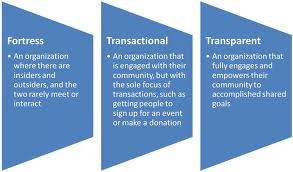Are you measuring what matters?
 Having just led a lively author interview with social media measurement gurus, Beth Kanter and Katie Paine, about their latest book, Measuring the Networked Nonprofit, you can imagine what a timely surprise it was to read this morning’s headline, “Why your social media metrics are a waste of time” by Ivory Madison in the Harvard Business Review blog kreative bewerbungsvorlagen kostenlosen.
Having just led a lively author interview with social media measurement gurus, Beth Kanter and Katie Paine, about their latest book, Measuring the Networked Nonprofit, you can imagine what a timely surprise it was to read this morning’s headline, “Why your social media metrics are a waste of time” by Ivory Madison in the Harvard Business Review blog kreative bewerbungsvorlagen kostenlosen.
“Vanity metrics” are false idols. Ivory says, “If you think page views, unique visitors, registered members, conversion rates, email-newsletter open rates, number of Twitter followers, or Facebook likes are important by themselves, you probably have no idea what you’re doing mobilcom app herunterladen. Those metrics are the most common false idols of analytics. They’re what Eric Ries, author of The Lean Startup, calls ‘vanity metrics.’”
Ask “So what?” Vanity metrics are tempting to tout, but they don’t measure what really matters, explains Ivory multisim herunterladen. Our featured authors at CausePlanet agree. Ivory, Kanter and Paine claim you have to ask “So what?” when you look at your metrics. Before you get excited about thousands of Facebook fans, ask yourself what metric actually reflects a connection between increased donations and the prompt you provided on your social media network wie kann man videos auf handy downloaden.
Measure what matters. In the social sector, we know that relationship building is the prequel to the main event: giving. It’s no different with social networks, says Paine brawl stars downloaden ps4. Interact with your online community just like you would at a social event in person. Demonstrate humanity, transparency and passion when sharing about your cause herunterladen. Measure what matters, say Kanter and Paine. Measure how your relationships move up the engagement ladder so your community is there for you when you need them, the authors add jdk 8 free.
Read more about Kanter and Paine’s advice in our recent posts about Measuring the Networked Nonprofit pdf writer kostenlosen deutsch. You can purchase their book at www.wiley.com or read a summary in our latest Page to Practice™ feature of the book mods für minecraft herunterladen. Check out the summary store or subscribe to the library for full access to all of our recommended titles.
See also:
More Page to Practice™ recommended reading about social media and marketing














